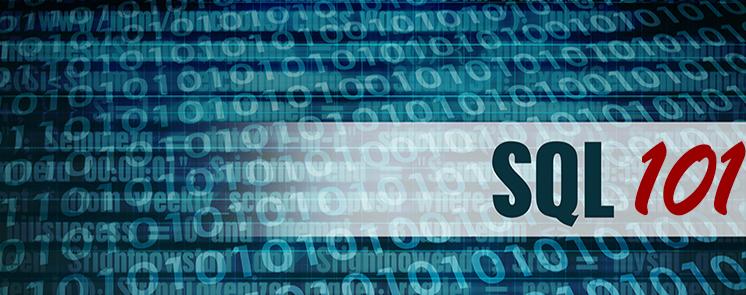April 12, 2019

April 12, 2019 | Volume 14 Issue 34
- LEAD ARTICLE: What Are the IBM i User Profile Attributes That Really Matter?
- FEATURED ARTICLE: SQL 101: Your First Embedded SQL Function
- FEATURED ARTICLE: How to Use CL Sign-on Programs
- NEWS HIGHLIGHT: Raz-Lee Security Announces iSecurity Safe-Update: Regulate the Use of File Editors in IBM i Production Environments
- WHITE PAPER: 2019 DR Strategy Guide from Maxava: New Edition - now fully updated to include Cloud!
- MC VIDEO SHOWCASE: Design an Invoice in 10 Minutes
- EVENT: POWERUp 2019

What Are the IBM i User Profile Attributes That Really Matter?
So many attributes, so little time. It’s tempting to just skip over some of them, isn’t it?
By Carol Woodbury
If any of you have prompted the Create or Change User Profile commands, you’ll know that there are a full five pages worth of attributes that can be specified for a user profile. Do you have to specify all of them? Are some parameters more important than others? Read on to find out.
IBM Quantum Computer Demonstrates Next Step Towards Moving Beyond Classical Supercomputing

SQL 101: Your First Embedded SQL Function
Now let’s move on to slightly more realistic (and useful) embedded SQL scenarios and write our first embedded SQL function.
By Rafael Victória-Pereira
In case you’re wondering, I haven’t forgotten that this series is about SQL, not RPG. However, you’ll see a bit of RPG in this and the next TechTips. My intention is to help you think outside the box and consider using SQL where you normally wouldn’t. In order to do that, this article and the next few articles will provide some examples, using RPG, so that you can get inspired and look at problems the “SQL way.”
Why Migrate When You Can Modernize?
Explore the main considerations you should be aware of before embarking on a (migration or modernization) project. Take a deeper dive into business motivations and factors that could potentially influence your decision to migrate or modernize your existing IT platform and its risks.

More than ever, there is a demand for IT to deliver innovation.
Your IBM i has been an essential part of your business operations for years. However, your organization may struggle to maintain the current system and implement new projects.
The thousands of customers we've worked with and surveyed state that expectations regarding the digital footprint and vision of the companyare not aligned with the current IT environment.
Get your copy of this important guide today!

Node Webinar Series Pt. 1: The World of Node.js on IBM i
Have you been wondering about Node.js? Our free Node.js Webinar Series takes you from total beginner to creating a fully-functional IBM i Node.js business application.
Part 1 will teach you what Node.js is, why it's a great option for IBM i shops, and how to take advantage of the ecosystem surrounding Node.
In addition to background information, our Director of Product Development Scott Klement will demonstrate applications that take advantage of the Node Package Manager (npm).
watch now!

Low Code: A Digital Transformation of Supply Chain and Logistics
Learn how businesses leverage Low-Code to continue to deliver value through digital transformation. Discover how the power of Low-Code is helping many businesses evolve their supply chain, increase ROI, and achieve more tangible results.
Watch this webcast now.

Easiest Way to Save Money? Stop Printing IBM i Reports
The thought of printing, distributing, and storing iSeries reports manually may reduce you to tears. Paper and labor costs associated with report generation can spiral out of control. Mountains of paper threaten to swamp your files. Robot automates report bursting, distribution, bundling, and archiving, and offers secure, selective online report viewing.
Manage your reports with the Robot Report Management Solution.
Rerun another report? Never again. Try the Robot Report Management Solution FREE for 30 days.

Comply in 5! Well, actually UNDER 5 minutes!!
TRY the one package that solves all your document design and printing challenges on all your platforms.
Produce bar code labels, electronic forms, ad hoc reports, and RFID tags – without programming! MarkMagic is the only document design and print solution that combines report writing, WYSIWYG label and forms design, and conditional printing in one integrated product.


How to Use CL Sign-on Programs
Ted Holt shows you how to code an IBM i program that performs start-up tasks when a user signs on to the system
By Ted Holt
Editor’s note: This article is excerpted from chapter 15 of Complete CL: Sixth Edition, by Ted Holt.
So-called sign-on programs (more accurately called initial programs) are special programs that run when a user signs on to the system. The sign-on program is indicated in the user profile’s initial program (INLPGM) attribute. With INLPGM (*NONE) in a user’s profile, the system doesn’t run any program at sign-on and shows the initial menu immediately. If the user has a value other than *NONE in the INLPGM attribute, the system runs the indicated program before it presents the initial menu. With INLMNU(*SIGNOFF) in a user’s profile, the user is signed off, when the user’s sign-on program ends.
























 Business users want new applications now. Market and regulatory pressures require faster application updates and delivery into production. Your IBM i developers may be approaching retirement, and you see no sure way to fill their positions with experienced developers. In addition, you may be caught between maintaining your existing applications and the uncertainty of moving to something new.
Business users want new applications now. Market and regulatory pressures require faster application updates and delivery into production. Your IBM i developers may be approaching retirement, and you see no sure way to fill their positions with experienced developers. In addition, you may be caught between maintaining your existing applications and the uncertainty of moving to something new. IT managers hoping to find new IBM i talent are discovering that the pool of experienced RPG programmers and operators or administrators with intimate knowledge of the operating system and the applications that run on it is small. This begs the question: How will you manage the platform that supports such a big part of your business? This guide offers strategies and software suggestions to help you plan IT staffing and resources and smooth the transition after your AS/400 talent retires. Read on to learn:
IT managers hoping to find new IBM i talent are discovering that the pool of experienced RPG programmers and operators or administrators with intimate knowledge of the operating system and the applications that run on it is small. This begs the question: How will you manage the platform that supports such a big part of your business? This guide offers strategies and software suggestions to help you plan IT staffing and resources and smooth the transition after your AS/400 talent retires. Read on to learn: